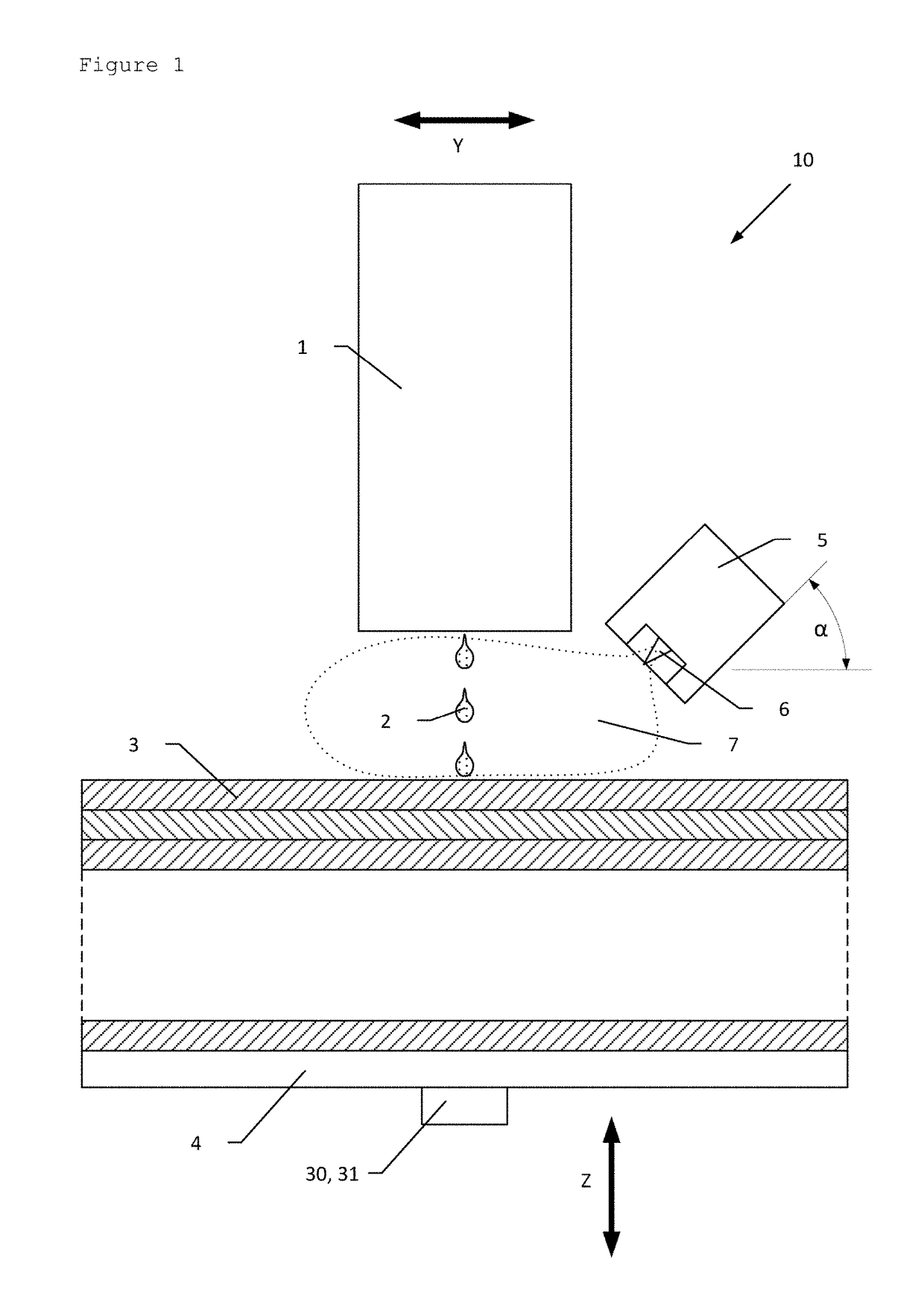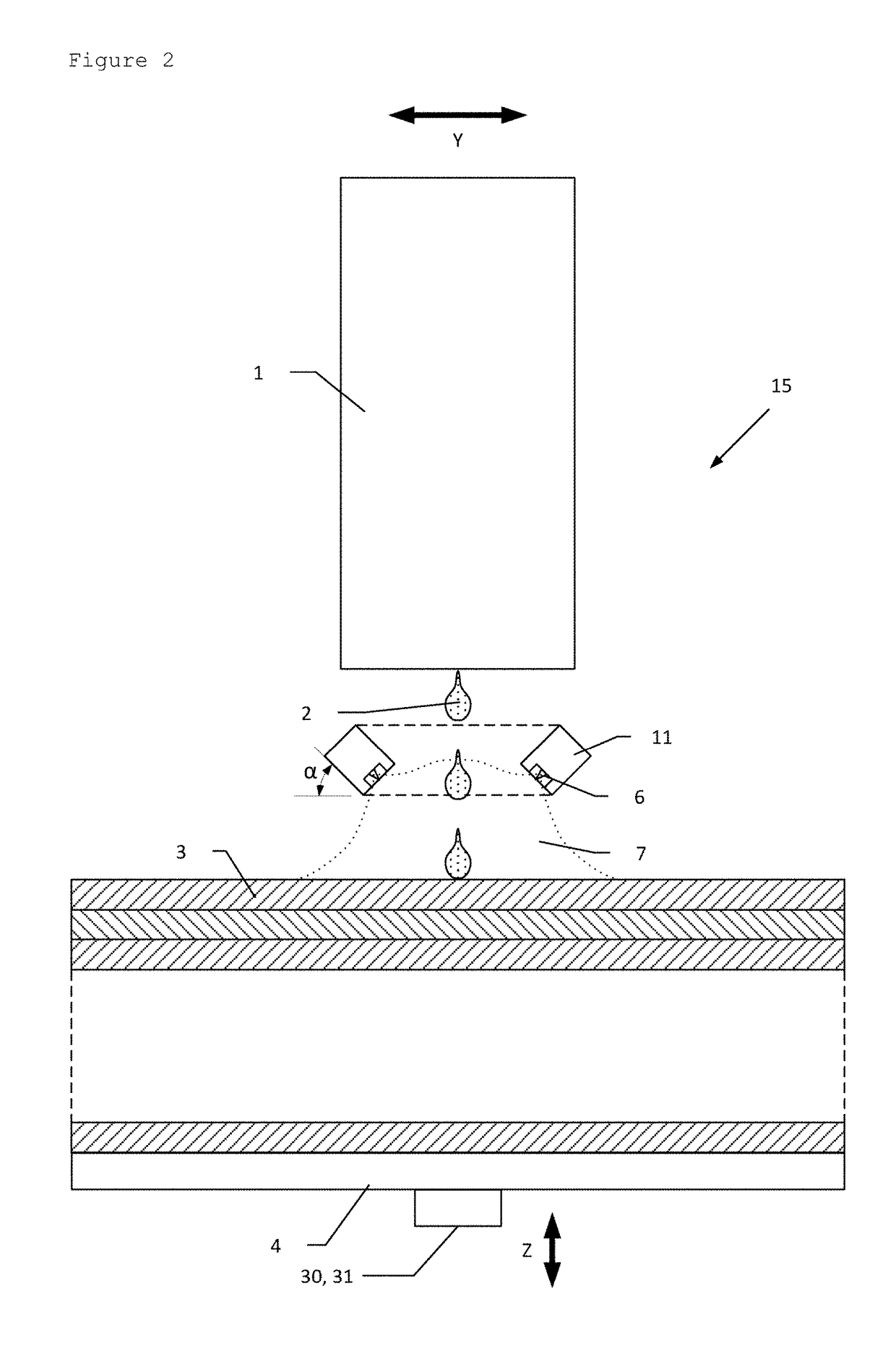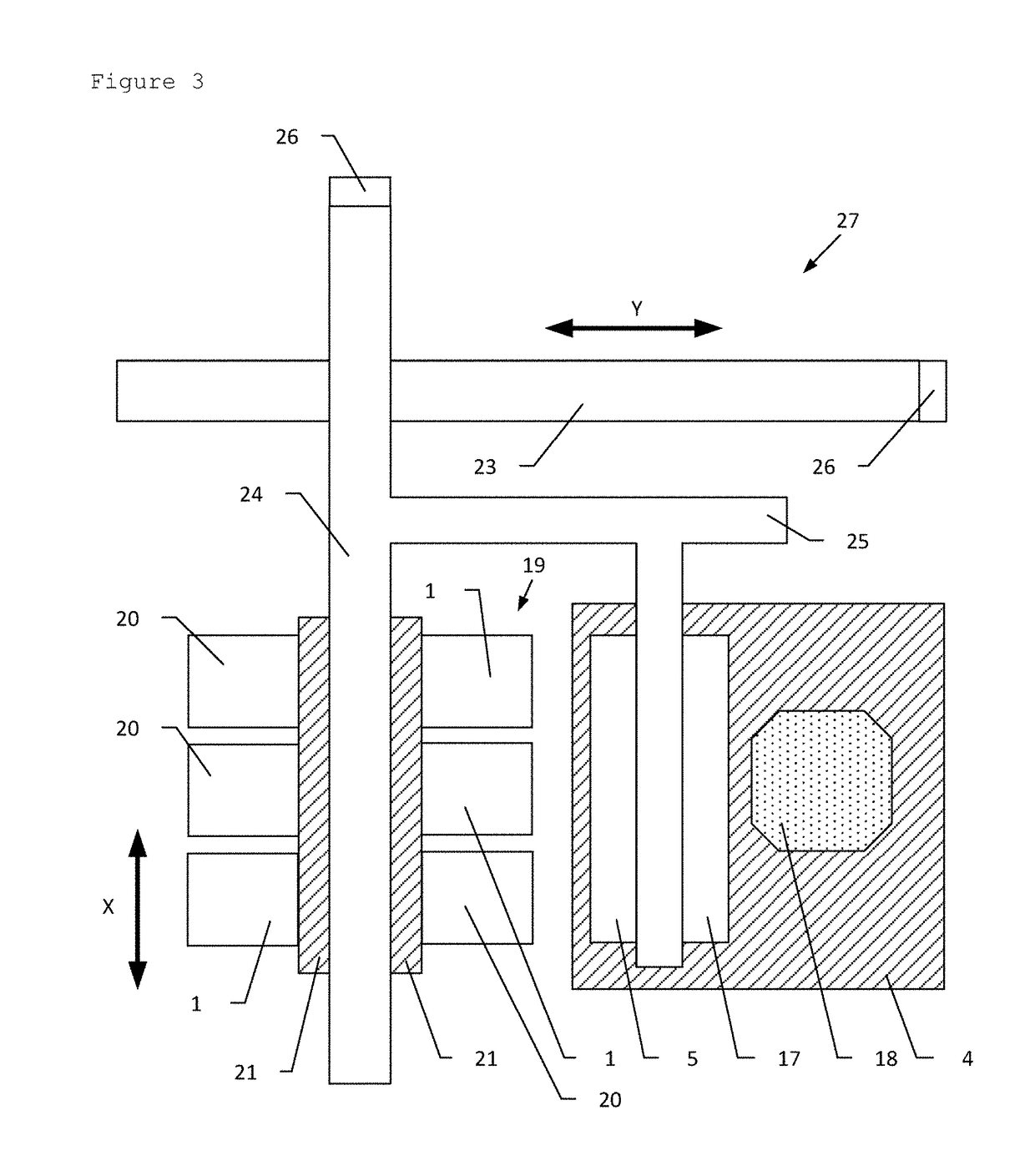Method for producing silicone elastomer articles with elevated print quality
a technology of elastomer and additive printing, which is applied in the direction of additive manufacturing processes, manufacturing tools, and applying layer means, etc., can solve the problems of not being able to implement very complex structures, the production of injection moulds suitable for this purpose is becoming increasingly laborious and costly, and the existing methods are increasingly meeting their limits, so as to achieve elevated and uniform print quality and high throughput
- Summary
- Abstract
- Description
- Claims
- Application Information
AI Technical Summary
Benefits of technology
Problems solved by technology
Method used
Image
Examples
example
[0130]There follows a description of a specific example for the method according to the invention in a manufacturing system according to the invention having a high-voltage electrode and a downstream water-cooled UV-LED bar. The printing space is completely closed and is accessible only via a hatch with a safety switch. The ionization is activated at the start of the printing operation and deactivated at the end of the printing operation. The process sequence corresponds to the sequence shown in FIG. 5. Ionization is effected by means of a 50 Hz AC voltage in the range up to 5000 V. The ionization system is designed such that direct contact does not constitute any risk to personnel. Possible stray currents are minimized to such a degree (<0.05 mA) that the system is classified as safe for use. Moreover, the switching-on and -off during the printing process and the door circuit avoids the possibility of an unpleasant electric shock. Ozone formed as a result of the ionization is led o...
PUM
| Property | Measurement | Unit |
|---|---|---|
| Flow rate | aaaaa | aaaaa |
| Mechanical properties | aaaaa | aaaaa |
Abstract
Description
Claims
Application Information
 Login to View More
Login to View More - R&D
- Intellectual Property
- Life Sciences
- Materials
- Tech Scout
- Unparalleled Data Quality
- Higher Quality Content
- 60% Fewer Hallucinations
Browse by: Latest US Patents, China's latest patents, Technical Efficacy Thesaurus, Application Domain, Technology Topic, Popular Technical Reports.
© 2025 PatSnap. All rights reserved.Legal|Privacy policy|Modern Slavery Act Transparency Statement|Sitemap|About US| Contact US: help@patsnap.com



